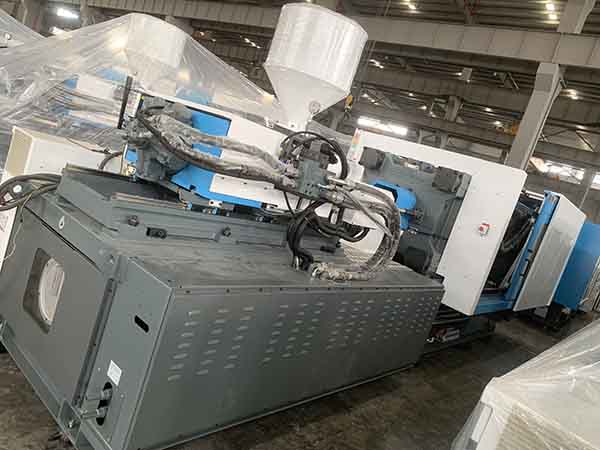Design Software and Simulation Technology in the Injection Molding Industry: Key to Improving Production Efficiency and Product Quality

With the continuous development of technology, the injection molding industry is also undergoing constant technological innovations. In this process, the application of design software and simulation technology has gradually become a key factor in improving production efficiency and product quality. Let’s discuss the design software and simulation technology in the injection molding industry and their advantages and value in practical applications.
I. Current Situation and Challenges in the Injection Molding Industry
Injection molding machines are important equipment widely used in plastic product manufacturing. The working principle involves injecting molten plastic material into molds, which are then cooled and formed into finished products. With the expanding market for plastic products, the injection molding industry faces significant development opportunities. However, amidst intensified market competition, companies must continuously improve production efficiency and product quality to stand out.
In this process, the application of design software and simulation technology has become one of the key technologies in the injection molding industry. By utilizing advanced design software and simulation technology, companies can conduct a large number of experiments and optimizations in the product design phase, thereby greatly improving production efficiency and product quality.
II. Design Software in the Injection Molding Industry
Design software in the injection molding industry mainly includes Computer-Aided Design (CAD) software and Computer-Aided Engineering (CAE) software. CAD software is primarily used for three-dimensional modeling and two-dimensional drafting of products, while CAE software is used for structural analysis, thermal analysis, fluid analysis, and more.
1、CAD Software
CAD software is mainly used in the injection molding industry for product structural design, mold design, and process flow design, among others. By using CAD software, designers can quickly complete three-dimensional modeling and two-dimensional drafting of products, thereby improving design efficiency. Additionally, CAD software can exchange data with other design software and production equipment, achieving seamless integration between design and production.
2、CAE Software
CAE software is applied in the injection molding industry for structural analysis, thermal analysis, fluid analysis, and more. By utilizing CAE software, engineers can conduct a large number of experiments and optimizations in the product design phase, significantly improving production efficiency and product quality. Similarly to CAD software, CAE software can exchange data with other engineering software and production equipment, achieving seamless integration between design and production.
III. Simulation Technology in the Injection Molding Industry
Simulation technology in the injection molding industry mainly includes Finite Element Analysis (FEA), Thermal Conductivity Analysis (TCA), Computational Fluid Dynamics (CFD), and more. These simulation technologies help engineers conduct a large number of experiments and optimizations in the product design phase, resulting in improved production efficiency and product quality.
1、Finite Element Analysis (FEA)
Finite Element Analysis is a powerful tool for solving complex engineering problems, enabling nonlinear, dynamic, and transient analysis of product structures. By using Finite Element Analysis, engineers can identify potential structural issues during the product design phase, thereby avoiding quality problems during production.
2、Thermal Conductivity Analysis (TCA)
Thermal Conductivity Analysis is a method used to solve heat conduction problems, enabling detailed analysis of a product’s thermal conductivity performance. By utilizing Thermal Conductivity Analysis, engineers can optimize the thermal conductivity performance of the product during the design phase, thereby improving production efficiency and product quality.
3、Computational Fluid Dynamics (CFD)
Computational Fluid Dynamics is a method used to solve fluid flow problems, enabling detailed analysis of a product’s fluid flow performance. By utilizing Computational Fluid Dynamics, engineers can optimize the fluid flow performance of the product during the design phase, thereby improving production efficiency and product quality.
IV. Application Cases of Design Software and Simulation Technology in the Injection Molding Industry
In the development of a new injection molding machine, a certain injection molding company employed advanced design software and simulation technology. Firstly, designers used CAD software to complete three-dimensional modeling and two-dimensional drafting of the product. Then, engineers used CAE software for structural analysis, thermal analysis, fluid analysis, and more. Through these simulation experiments, engineers discovered potential issues with the product and made corresponding optimizations. As a result, the new injection molding machine demonstrated outstanding performance in the production process, with significantly improved production efficiency and product quality.
V. Conclusion
Design software and simulation technology in the injection molding industry hold significant application value in improving production efficiency and product quality. By utilizing advanced design software and simulation technology, we can conduct a large number of experiments and optimizations during the product design phase, thereby greatly improving production efficiency and product quality. With the continuous development of technology, the injection molding industry will have broader development prospects, and design software and simulation technology will continue to play their crucial roles.


